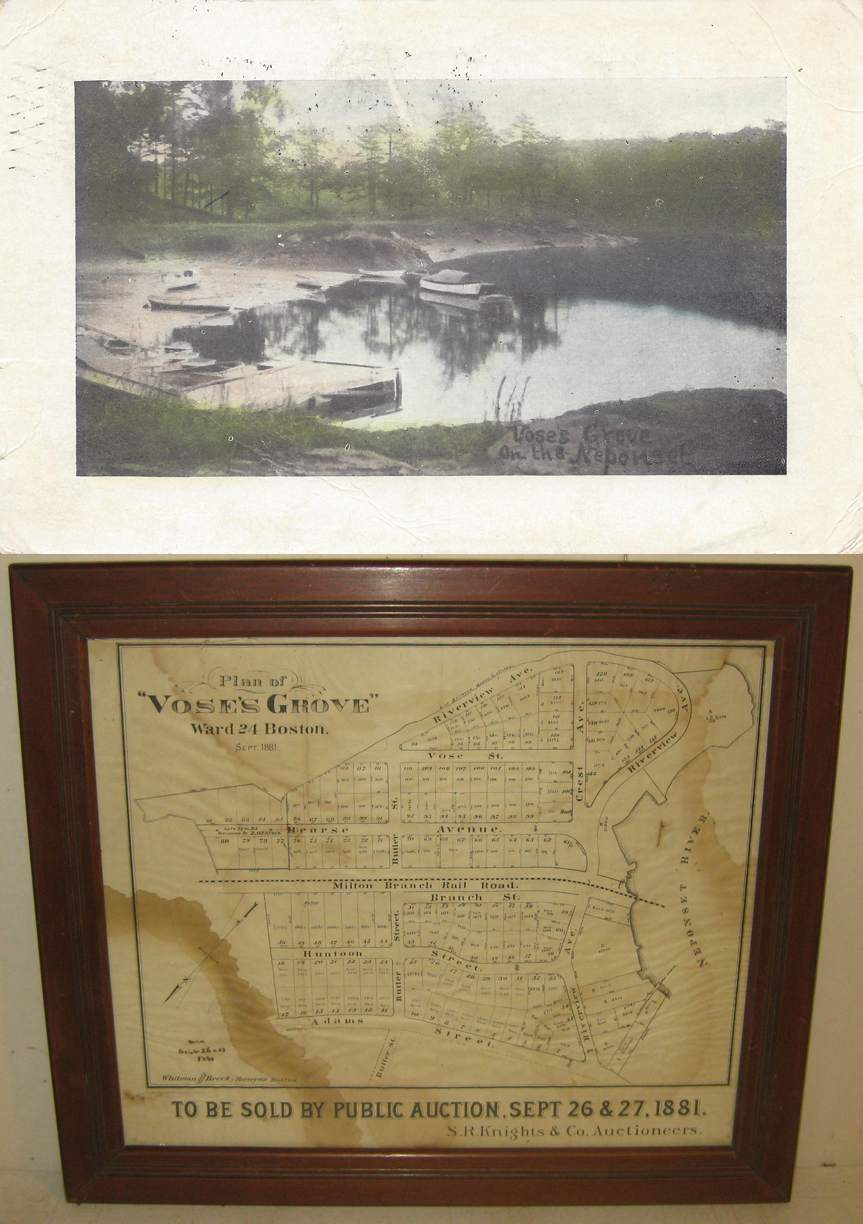Dorchester Illustration no. 2374 Vose’s Grove
Today’s illustration has a postcard of the Grove postmarked 1911.
Vose’s Grove was the name for the land along the Neponset River extending to Adams Street, now including streets: Huntoon Street, Branchfield Street, Bearse Avenue, Ventura Street, Medway Street and Butler Street. The Grove was used first by the native Americans and later as a picnic spot.
The Massachusetts Indians who had settled near the mouth of the Neponset River were known as the Neponset Indians; and Chicataubut, their sachem, was styled the “Sagamore of the Neponsetts.” It was here in a grove now known as Vose’s Grove that John Eliot, on the 14th of September, 1646 , first preached the gospel to the Indians in the wigwam of Kitchamakin, the successor of Chicataubut. Eliot continued to take a deep interest in their welfare; and it was owing to his advice that when for a trifling consideration they sold their lands at Neponset, they decided to remove to Ponkapoag. [History of the Town of Canton, Norfolk County, Massachusetts. By Daniel Thomas Vose Huntoon. (Cambrige, 1893)]
Vose’s Grove was used for picnics and fairs, including the following.
One of the first fairs in an open grove in this vicinity was held at Vose’s Grove, a beautiful spot at the head of tide-water on Neponset River, July 4, 1838, for the purpose of raising funds wherewith to establish a library: The Ladies’ Dorchester and Milton Circulating Library. The proceeds of the fair were $965.10. [History of the Town of Dorchester, Massachusetts. By a Committee of the Dorchester Antiquarian and Historical Society. (Boston, 1859)]
The Martha Washing Temperance Society of Dorchester held a great picnic here in 1842 or 1843. In the Washingtonian movement, temperance meetings were often held in the Village Church, followed by processions of school children marching with music and banners to Vose’s Grove, where they had a collation. [History of the Fist Methodist Episcopal Church, Dorchester Massachusetts. By John R. Chaffee. (Chicago, 1917)]
Today the Grove comprises streets of residential housing and Ventura Park.

